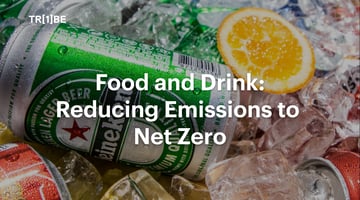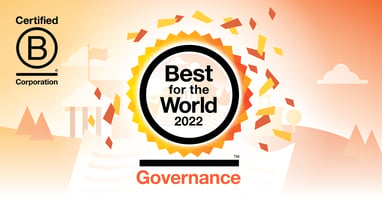Food is one of our most essential resources that requires a huge amount of land and energy to grow,...
A Full Breakdown Of The UN Sustainable Development Goals

Looking for more information on the UN Sustainable Development Goals? We’ve broken down all 17 of them…
Join the One Tribe Newsletter for weekly climate action news!
Introduction
To achieve a greener future the United Nations laid out certain goals that act as a roadmap to a more sustainable life on Earth. They are better known as the UN Sustainable Development Goals or ‘SDGs’ for short.
In total, the SDGs make up 17 interlinked global goals designed to be a “blueprint to achieve a better and more sustainable future for all”. They were set up in 2015 by the United Nations General Assembly (UN-GA) with aims to be achieved by 2030.
Having said all this, here’s a clear breakdown of every UN sustainable development goal, starting with their history.
A Brief History Of SDGs

The SDGs first came into fruition back in 2015. But this doesn’t mean that world leaders weren’t concerned about the environment before this. In fact, the SDGs were developed as part of the Post-2015 Development Agenda to replace or to succeed the Millennium Development Goals that were going to end in 2015.
Discussions regarding the Post-2015 Development Agenda included planning and preparations for the financing of the implementation of new sustainable development goals. It ended with the adoption of the Addis Ababa Action Agenda in July 2015, and ultimately the final document entitled “Transforming our world: the 2030 Agenda for Sustainable Development”, simply called Agenda 2030.
On 25 September 2015, 193 countries from the UN General Assembly adopted Agenda 2030 to shape the future of the earth. The documentation contains the 17 Sustainable Development Goals along with their associated 169 targets and 232 indicators.
Targets and Indicators
Two years after SDGs were set up, the UN General Assembly passed another resolution where it introduced two parameters – Targets and Indicators – to make the interdependent goals more actionable and detail oriented.
The new resolution ties each SDG with a specific target along with indicators that aim to measure the progress made towards each goal. Though these targets are intended to be achieved between 2020 and 2030, for some targets there is no any given deadline.
To monitor the progress made towards achieving these targets, there are also Indicators that can be visualised through online tools or trackers which allow a better understanding and analysis of the data captured. The online publication SDG Tracker shows necessary details regarding all the indicators embedded with the targets
An Overview Of All 17 UN Sustainable Development Goals

Goal 1: No Poverty
Goal: “End poverty in all its forms everywhere”.
As per the World Bank data, about 9.2% of the present world, which is around 700 million people, are living in extreme poverty on less than $1.90 per day. This means these people struggle to meet even basic necessities of life ie. water, health, education and sanitation.
Goal 1 of SDGs aims to tackle the problem of world poverty in all forms. It has 7 Targets and 13 Indicators.
Goal 2: Zero Hunger
Goal: “End hunger, achieve food security and improved nutrition, and promote sustainable agriculture”.
Malnutrition is responsible for around 3.1 million deaths in children worldwide and 8.9% of the world’s population (around 663 million people) are undernourished.
Goal 2 of Agenda 2030 aims to end world hunger by providing better access to food resources across the globe. It also aims to improve agricultural productivity through sustainable means. It has 8 Targets and 14 Indicators to measure the progress of the Targets.
Goal 3: Good Health and Well-being
Goal: “Ensure healthy lives and promote well-being for all at all ages”.
Goal 3 of the sustainability agenda aims to reduce the mortality rate of the global population. It also aims to fight communicable diseases, promote mental health, and reduce road injuries and related deaths. It has 13 targets and 28 indicators in total.
Goal 4: Quality Education
Goal: “Ensure inclusive and equitable quality education and promote lifelong learning opportunities for all”.
Goal 4 aims to provide free primary and secondary education for all, affordable higher education and also focuses on creating awareness for sustainable development. It has 10 Targets in total and 11 Indicators.
The results of Goal 4 efforts are satisfactory, with the number of out-of-school children halved from 112 million in 1997 to 60 million in 2014. The global participation in tertiary education has also improved and now it has the gross enrolment ratio of 38%.
Goal 5: Gender Equality
Goal: “Achieve gender equality and empower all women and girls”.
To tackle the issue of gender discrimination, SDG 5 aims to empower all women and girls with equal rights and opportunities.
The results obtained show that more women are now in decision making positions at the local bodies with 36% of elected seats, as per data obtained from 133 countries. In 2020, the women representation in lower houses of national parliament was 25%, a slight increase from 2015 where it stood at 22%.
Goal 6: Clean Water and Sanitation
Goal: “Ensure availability and sustainable management of water and sanitation for all”.
As per a 2017 report from the Joint Monitoring Programme(JMP) of World Health Organisation (WHO) and UNICEF, 4.5 billion people (which is more than half of the world) don’t have proper sanitation systems. The report also mentioned that 2.2 billion people are devoid of safe drinking water.
Goal 6 aims to ensure safe and affordable drinking water to people all around the world and provide access to well maintained sanitation.
Goal 7: Affordable and Clean Energy
Goal: “Ensure access to affordable, reliable, sustainable and modern energy for all”.
As per EIA, the global energy expenditure is expected to increase by 48% before 2040. Since the world is already facing an energy crisis this goal demands further attention towards the use of clean or renewable sources of energy either for electricity generation or transportation purposes.
Goal 7 aims to provide research, development, and investments for endeavours concercering clean energy, with hopes of making it an affordable and reliable source for the masses while increasing the share of renewable energy in the global energy mix. It has 5 total targets to achieve and 6 indicators.
Goal 8: Decent Work and Economic Growth
Goal: “Promote sustained, inclusive and sustainable economic growth, full and productive employment and decent work for all”.
In 2019, it was reported that 22% of youngsters were unemployed. What’s more unfortunate is that this figure has hardly changed since 2005. In the last 5 years, the economic growth in less developed countries has been increasing at the rate of 4.3% on an average which is less than the targeted growth rate of 7% as per Goal 8.
So, Goal 8 wants nations to achieve sustainable economic growth for all to reduce social disparity and aims to provide quality work opportunities with equal pay while ending child labour, modern slavery and trafficking. It has 12 Targets to achieve in total.
Goal 9: Industry, Innovation and Infrastructure
Goal: “Build resilient infrastructure, promote inclusive and sustainable industrialization, and foster innovation”.
Universal access to information and communication technology, sustainable infrastructure development and industrialization, and upgradation of industrial technologies are just a few out of the 8 Targets of Goal 9 whose progress is measured by 12 Indicators.
Goal 10: Reduced Inequality
Goal: “Reduce income inequality within and among countries”.
As per United Nations Economic and Social Council Report 2020, 40% of the world’s population received less than 25% of the overall consumption or income of the world’s population.
The major victims of this discrimination are mainly women and disable-bodied people. The remainder were discriminated against on the basis of their caste, colour, religion and ethnicity.
Goal 10 aims to reduce income equalities and wants to provide equal opportunities for all while also ending discrimination of all forms. It has a total of 7 Targets which it wants to achieve.
Goal 11: Sustainable Cities and Communities
Goal: “Make cities and human settlements inclusive, safe, resilient, and sustainable”.
In 2019, only half of the world’s population had convenient access to public transportation.
In 2018, 24% of the urban population (which comes to around 1 billion people) were living in slums.
To combat such extreme statistics, Goal 11 aims to improve people’s livelihood and living conditions. It aims to provide affordable housing facilities and access to public transportation systems for each and every member of the society. It has a total of 10 Targets and 14 Indicators to measure those targets.
Goal 12: Responsible Consumption and Production
Goal: “Ensure sustainable consumption and production patterns”.
Every activity that we perform on this planet, like production of food, driving a fuel based vehicle or using an electrical appliance, results in a huge carbon footprint.
Goal 12 has a total of 11 targets, and wants global communities to use Earth’s natural resources efficiently. The goal is to reduce wastage of food and other resources, recycle products and create awareness towards all kinds of sustainable practices for an emission-free and ultimately greener planet.
Goal 13: Climate Action
Goal: “Take urgent action to combat climate change and its impacts by regulating emissions and promoting developments in renewable energy”.
Between 2000 and 2013, the GHG emissions in developing countries has increased by 43%. In addition, the period spanning 2010 – 2019 was the warmest decade recorded in human history.
The result is climate change or the increase in frequency of disasters like floods, wildfires, hurricanes, droughts, etc. which we are experiencing today.
So, Goal 13 aims to combat climate change and its impacts and has a total of 5 Targets in it.
Goal 14: Life Below Water
Goal: “Conserve and sustainably use the oceans, seas and marine resources for sustainable development”.
Overfishing due to illegal fishing and ocean acidification are some of the key challenges for the ecosystem and species living below water. Since the industrial revolution, ocean acidification has increased by 26%.
The oceans cover more than 2/3 of the Earth’s surface and make up 97% of the planet’s water. Rainwater and climate are also regulated by ocean temperatures and current, meaning they keep planet Earth viable.
Having said this, Goal 14 of the SDGs aims to reduce ocean acidification, conserve coastal areas and marine ecosystems, and promote sustainable fishing. There are 7 Targets in Goal 14.
Goal 15: Life On Land
Goal: “Protect, restore and promote sustainable use of terrestrial ecosystems, sustainably manage forests, combat desertification, and halt and reverse land degradation and halt biodiversity loss”.
Forests cover 30% of the Earth’s surface and are a home to millions of animal, plants and tree species. They also absorb CO2 from air thus helping to combat climate change.
But there has been a decline in forests in the past decade from 31.9% in 2000 to 31.2%% in 2020 which is loss-equivalent to 100 million hectares of forest. The major reason behind this decline was the change of forest land into land for agriculture usage.
To end deforestation and desertification, start restoring degraded forests, protect biodiversity and natural habitats, and eliminate poaching and trafficking of protected species, we have Goal 15 in the Agenda 2030 where it carries 12 targets to achieve in total.
Goal 16: Peace, Justice and Strong Institutions
Goal: “Promote peaceful and inclusive societies for sustainable development, provide access to justice for all and build effective, accountable and inclusive institutions at all levels”.
It was found that the lower-income countries have a high bribery rate. Since we can’t hope for sustainable development without transparency, stability and peace, Goal 16 aims to reduce bribery and develop more accountable and transparent institutions.
Reducing violent crime, sex trafficking, forced labour, and child abuse are some of its other targets. It has 12 targets to achieve in total.
Goal 17: Partnership for the Goals
Goal: “Strengthen the means of implementation and revitalize the global partnership for sustainable development”.
If the world wants to achieve the above 16 SDGs, then cooperation and coordination between resolution members plays a crucial role. And this is what Goal 17 is all about. It has 19 targets in it and 24 indicators to measure those targets.
Goal 17 wants countries and organizations to cooperate instead of compete. It desires all the members to develop multi-stakeholder partnerships to share knowledge, expertise, technology, and financial support for the overall success of the SDGs.
Which UN Sustainable Development Goals Do We Support At One Tribe?
At One Tribe we are strive to protect and preserve rainforest across the world.
We are on the same mission to make this planet more sustainable by mainly contributing towards 5 out the total 17 Goals. That 5 include [1] No Poverty, [13] Climate Action, [14] Life Below Water, [15] Life on Land, and [17] Partnership for the Goals.
To learn more about our goals check out our commitment page.


